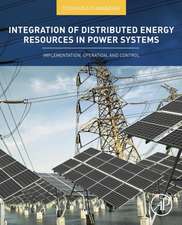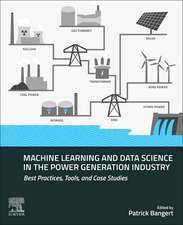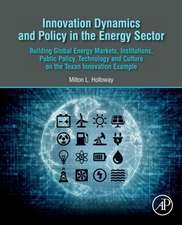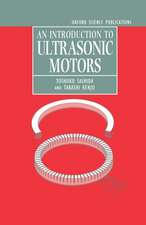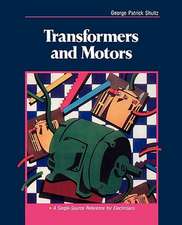Power Systems Modelling and Fault Analysis: Theory and Practice
Autor Nasser Tleisen Limba Engleză Paperback – 11 iun 2019
- Includes a fully up-to-date guide to the analysis and practical troubleshooting of short-circuit faults in electricity utilities and industrial power systems
- Presents sections on generators, transformers, substations, overhead powerlines and industrial systems
- Covers best-practice techniques, safety issues, power system planning and economics
Preț: 730.52 lei
Preț vechi: 1013.30 lei
-28% Nou
Puncte Express: 1096
Preț estimativ în valută:
139.83€ • 151.94$ • 117.53£
139.83€ • 151.94$ • 117.53£
Carte tipărită la comandă
Livrare economică 14-28 aprilie
Preluare comenzi: 021 569.72.76
Specificații
ISBN-13: 9780128151174
ISBN-10: 012815117X
Pagini: 940
Dimensiuni: 152 x 229 mm
Greutate: 1.23 kg
Ediția:2
Editura: ELSEVIER SCIENCE
ISBN-10: 012815117X
Pagini: 940
Dimensiuni: 152 x 229 mm
Greutate: 1.23 kg
Ediția:2
Editura: ELSEVIER SCIENCE
Public țintă
For the teaching of modern electrical power engineering at universities, graduate and practicing professional engineers by covering undocumented theoretical and practical knowledge and practical engineering problems and solutions.Cuprins
1. Introduction to power system faults
2. Theory of symmetrical components and connection of phase sequence networks during faults
3. Modelling of multi-conductor overhead lines and cables
4 Analysis of natural unbalance of overhead transmission lines
5. Modelling of transformers, static power plant and static load
6. Modelling of ac rotating synchronous and induction machines
7. Modelling of wind-turbine generators, solar photovoltaic (PV) generators and inverter interfaced systems
8. Short-circuit analysis techniques in ac power systems
9. International standards for short-circuit analysis in ac power systems
10. Assessment of circuit-breaker current interruption capability in networks with long dc time constant
11. Network equivalents and practical short-circuit assessments in large scale ac power systems
12. Control and limitation of high short-circuit currents
13. An introduction to the analysis of short-circuit earth-return current and rise of earth potential
14. An introduction to the analysis of electrical interference from power lines to pipelines
Appendices
A.1 Analysis of distributed multi-conductor lines and cables
A.2 Typical data of power system equipment
2. Theory of symmetrical components and connection of phase sequence networks during faults
3. Modelling of multi-conductor overhead lines and cables
4 Analysis of natural unbalance of overhead transmission lines
5. Modelling of transformers, static power plant and static load
6. Modelling of ac rotating synchronous and induction machines
7. Modelling of wind-turbine generators, solar photovoltaic (PV) generators and inverter interfaced systems
8. Short-circuit analysis techniques in ac power systems
9. International standards for short-circuit analysis in ac power systems
10. Assessment of circuit-breaker current interruption capability in networks with long dc time constant
11. Network equivalents and practical short-circuit assessments in large scale ac power systems
12. Control and limitation of high short-circuit currents
13. An introduction to the analysis of short-circuit earth-return current and rise of earth potential
14. An introduction to the analysis of electrical interference from power lines to pipelines
Appendices
A.1 Analysis of distributed multi-conductor lines and cables
A.2 Typical data of power system equipment


